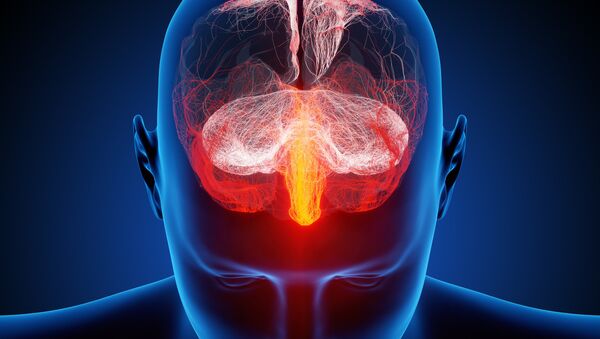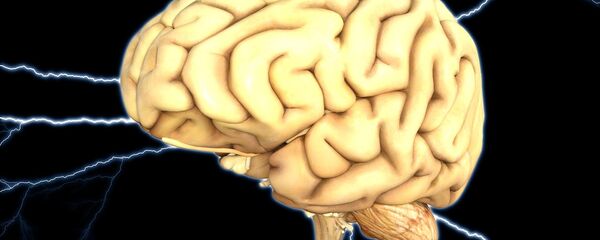Earlier this week, Sputnik reported new research by a team of scientists led by Dr. Casey Halpern of the Stanford School of Medicine, who made a discovery about how impulsive actions can be subverted via electrical impulses to the brain.
According to Halpern, the scientists detected an electrical spike in brain activity that occurs just before lab mice performed an addictive action — in this case, taking a bite of tasty fatty food. They called this spike "a moment of weakness."
They also discovered that artificial stimulation of reward centers in the brain right after this moment of weakness prevented the mice from taking a bite. The team claims the treatment did not affect their behavior in any other way.
In humans, they say, the same method could be used to prevent people from engaging in binge eating or taking drugs, among other harmful behaviors.
Halpern explained that the nucleus accumbens, the region they target located deep within the brain, is connected to many other parts of the brain. While admitting that, currently, stimulation of that part of the brain requires surgery, the team is now researching whether the same effect can be achieved by stimulation of the outer regions of the brain so that no deep surgery is needed. Until such a solution is found, the team's method relies on a type of brain surgery that neurosurgeons perform "somewhat routinely."
"It is relatively safe," he told Sputnik. "There is no brain tissue that's removed. But [still] it is a device-based treatment."
The technology relies on a device that has already been invented and introduced into everyday neural medicine, he says. Halpern's team simply seeks to repurpose the same device in a different zone.
"This is the same device that is used for treating seizures and epilepsy," he explained. "We believe [this] same device can be used for treating [obsessive-compulsive disorder] or binge eating."
According to Halpern, the team looks forward to testing their method on human patients. This method is safe, he stresses, but it is still invasive, and thus medical society is approaching it with great caution. Therefore, they're looking for a patient with a severe case of neural disorder that cannot be cured in any other way.
"We want to find a case that is very severe, one that the patient is dying from and can't live a rewarding life, and one who can have no other treatment and tried everything else… something like obesity or failed gastric bypass surgery because of their out of control eating, severe heroin addiction, opiate addiction, [or] depressed patients who have impulses to commit suicide."
"There is a large span of diseases that we can go after," Halpern noted.
Another obstacle for the team to overcome is money. Conducting trials on humans is "very expensive," Halpern said. As the team looks for funding, they are looking into various sources: the industry, the private sector, philanthropy or federal funding.
The team already has a small grant that will allow them to seek approval of the device from the US Food and Drug Administration. Once that approval is secured, the team anticipates receiving another grant to get their invention through the National Institute of Health.
If everything goes well, the team expects to start enrolling human patients as soon as next summer.
"Again, these are going to be patients who have severe obesity or failed gastric surgery, who have no other options. We are looking for that kind of patient," Halpern told Sputnik.




